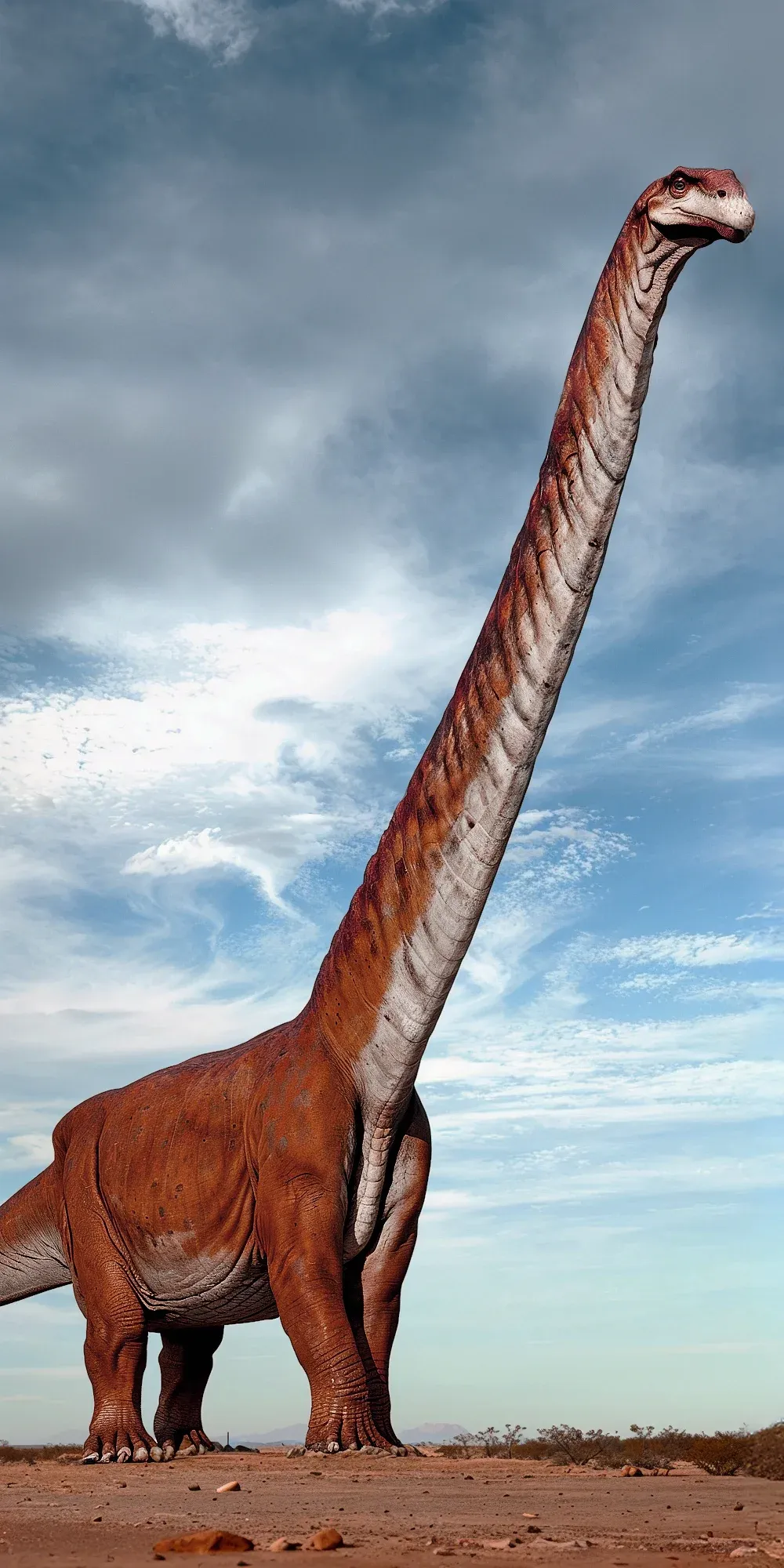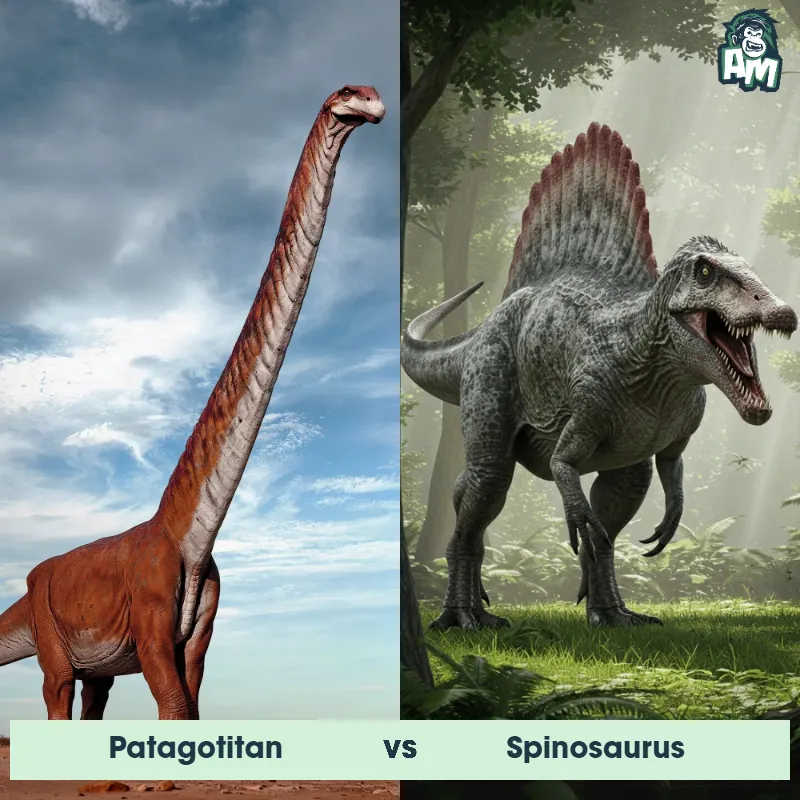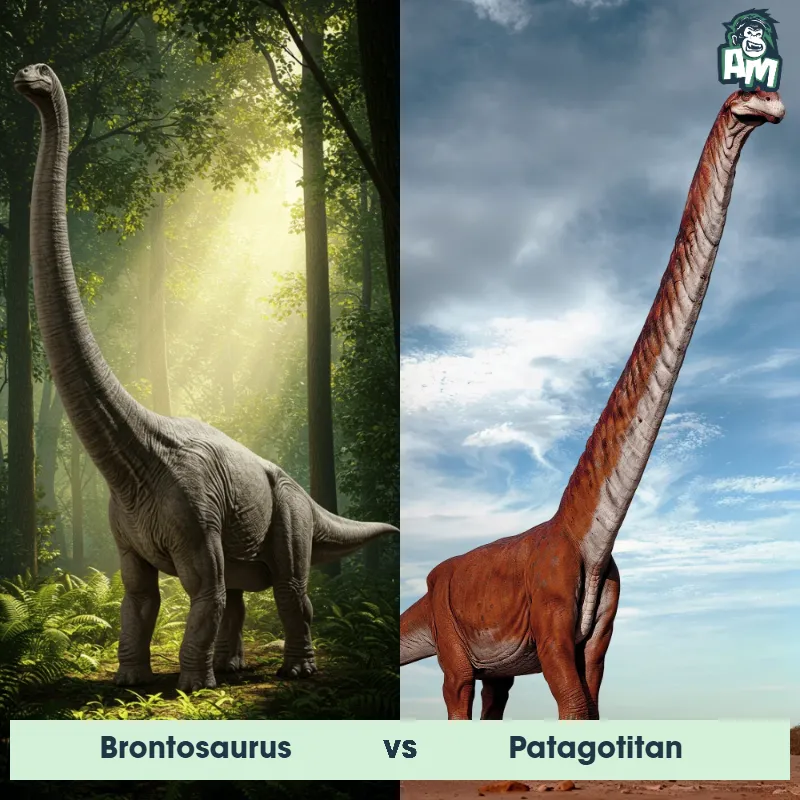The Patagotitan
The Patagotitan, also known as the Patagonian giant, is a huge dinosaur that lived during the Late Cretaceous period. It was one of the largest dinosaurs ever discovered, measuring around 37 meters in length and weighing up to 69 tons. This massive herbivore had a long neck, small head, and a large body supported by four thick legs.

| Patagotitan | |
|---|---|
| Size | Approximately 100 feet (30 meters) in length |
| Weight | Around 70 tons (63,500 kilograms) |
| Speed | 18 mph (29 km/h) |
| Key Strength | Powerful legs for defense |
| Biggest Weakness | Relatively small head |
| Scientific Name | Patagotitan |
| Family | Titanosaur |
| Habitat | Land |
| Geography | Patagonia, Argentina |
| Diet | Herbivorous |
| Lifespan | 70 years - 100 years |

The Patagotitan
The Patagotitan, also known as the Patagonian giant, is a huge dinosaur that lived during the Late Cretaceous period. It was one of the largest dinosaurs ever discovered, measuring around 37 meters in length and weighing up to 69 tons. This massive herbivore had a long neck, small head, and a large body supported by four thick legs.
Fun Fact: The Patagotitan is believed to have had a very long lifespan, potentially living for several decades.
| Patagotitan | |
|---|---|
| Size | Approximately 100 feet (30 meters) in length |
| Weight | Around 70 tons (63,500 kilograms) |
| Speed | 18 mph (29 km/h) |
| Key Strength | Powerful legs for defense |
| Biggest Weakness | Relatively small head |
| Scientific Name | Patagotitan |
| Family | Titanosaur |
| Habitat | Land |
| Geography | Patagonia, Argentina |
| Diet | Herbivorous |
| Lifespan | 70 years - 100 years |
Patagotitan Matchups
We use AI to simulate matchups between the Patagotitan and other animals. Our simulation considers size, strength, and natural predatory behaviors to determine the most likely outcome.

Can't find the Matchup you want?
Create Your Own MatchupPatagotitan: Diet, Predators, Aggression, and Defensive Behaviors
What did Patagotitans eat?
Patagotitans were herbivores, meaning they primarily ate plants. Their diet likely consisted of ferns, cycads, and other vegetation that grew in the prehistoric forests where they lived.
Did Patagotitans have any predators?
As one of the largest dinosaurs to have ever lived, adult Patagotitans would have had few natural predators. However, younger, smaller individuals may have been vulnerable to attacks from large theropod dinosaurs such as Giganotosaurus or Mapusaurus.
Were Patagotitans aggressive?
There was no evidence to suggest that Patagotitans were aggressive towards other dinosaurs or creatures. Their massive size likely acted as a deterrent to potential threats, and they probably used intimidation rather than aggression to defend themselves.
Did Patagotitans fight?
Patagotitans were not known to engage in fights with other dinosaurs. Their size and strength would have made combat unnecessary for establishing dominance or defending territory.
How did Patagotitans defend themselves?
Patagotitans likely relied on their sheer size and strength to defend themselves against predators. Their long necks and tails could have been used as weapons to fend off attackers, while their thick skin and bony plates provided some protection.
What was the biggest weakness of Patagotitans in a fight?
Despite their massive size and strength, the biggest weakness of Patagotitans in a fight would likely have been their relatively slow speed and limited agility. This would have made it difficult for them to evade fast-moving predators or quickly turn to face a threat from behind.
Fun Fact: Despite its massive size, the Patagotitan was a gentle giant, feeding on plants and vegetation rather than other animals.
Fun Fact: Fossilized bones of the Patagotitan were first discovered in Argentina in 2012, leading to further research on this colossal dinosaur's existence and characteristics.












